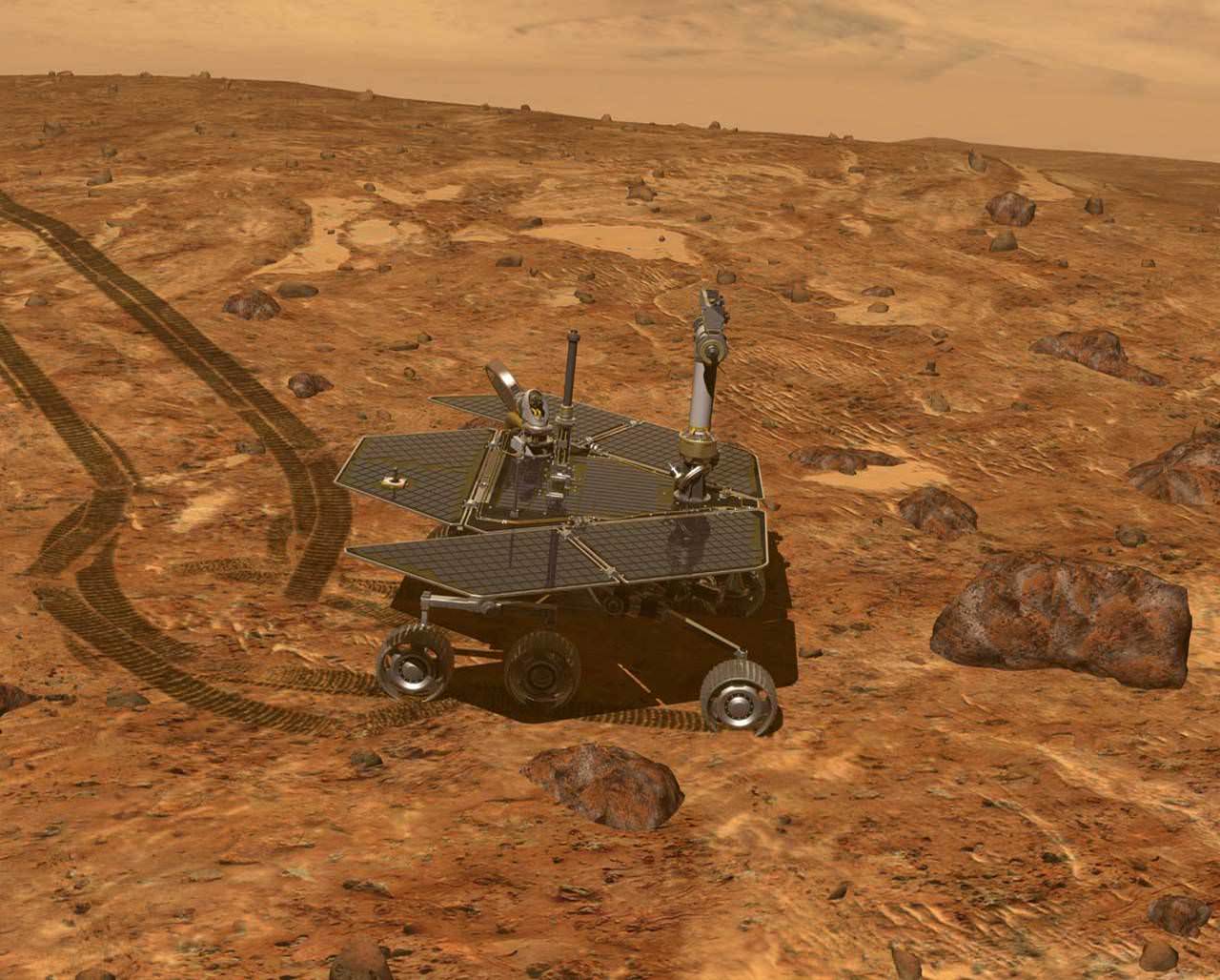 |
| An artist's impression of the Mars Rover trundling across the surface of the Red Planet, whose soils and rocks may have once been home to a multitude of different life forms |
It began to form just 500 million years after the universe was born and therefore the many alien solar systems that make up the eight spiral arms may actually contain countless billions of extinct species within their rocks. Of course many of these systems are many light years away and are unlikely to be reached within our lifetime. Instead, astrobiologists tend to look at a body rather closer to home, Mars, as another planet that may have once harboured life.
Men are expected to walk on the surface of Mars within the next 50 years and if Martian fossils are found, this article will serve as a nice precursor. So without much further ado, let us travel not quite to infinity and beyond, but instead a mere 150 million miles to the Red Planet, where exciting new geological developments are setting the boundaries for its potential evolutionary history!
In 2005, radar data from one of the Mars Rovers revealed the presence of massive bodies of frozen water at the poles. This sparked off great excitement as it provided a proper chance that life, at the very least, may have existed upon the surface of the planet. Since then, everything from channels created by flowing water to organic molecules found in life have been found in the red rocks. Each new discovery has added a little more to the planet's story.
 |
| The scoop of the Phoenix probe with a cargo of Martian soil |
They analysed the samples, using an optical microscope to produce images of larger sand-sized particles, and an atomic-force microscope to produce 3D images of surface particles as small as 100 micrometres across. Amongst other things, the team were looking for microscopic particles of clay which act like markers, to see if their parent rocks had come in contact with water. No such markers were found. They estimated that even if some of the particles were clay, they made up less than 0.1 % of the sample.
On Earth, most soils are made up of around 50 % clay. The extreme difference between the two shows that Mars has been arid for a very long time. While it almost certainly had a warmer and wetter period in its history more than 3 billion years ago, the study revealed that the Red Planet has not had liquid water on its surface soil for the past 600 million years at the very least.
Mars formed around the same time as the Earth around 4.5 billion years ago. Any traces of Martian life forms that we may find on its surface will be 600 million years old or older. As there is a definite cut-off point to Mars' hypothetical evolutionary history, it will be fascinating to study such fossils if they do exist. While we cannot say what they will like, whether they were simple bacteria or more complex, multicellular creatures, the ability to study the entire evolutionary history of a planet will provide us with invaluable insight into our own.
The next step will be to look for fossils or even living organisms under the soil, rock and ice, where liquid water may still remain, kept fluid by the decay of radioactive elements in the core. But for now, unless Martian fossils arrive on Earth on fragments of rock blasted from the home planet by meteorites (a more common occurrence than one might think) or sent to us by robots on unmanned missions, we can put our feet up and wait for another few decades until we truly leave our planet to set foot on another world.